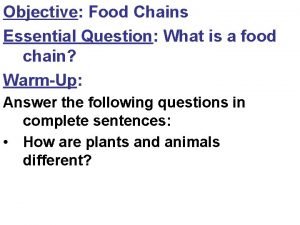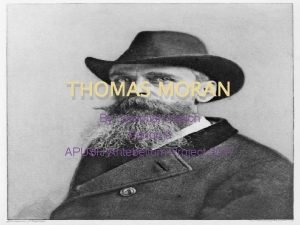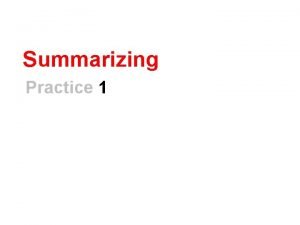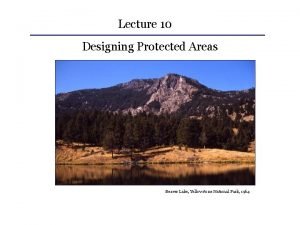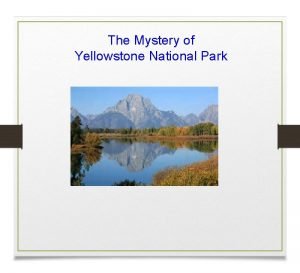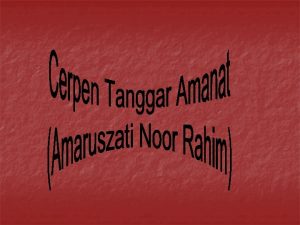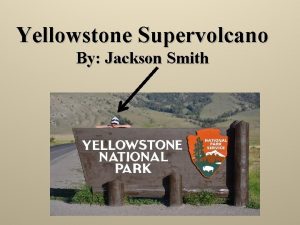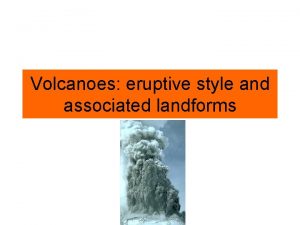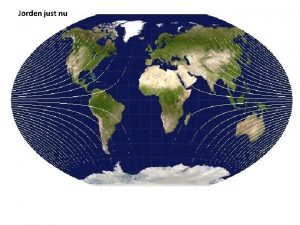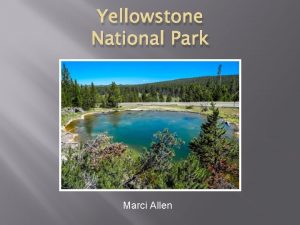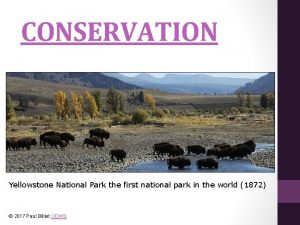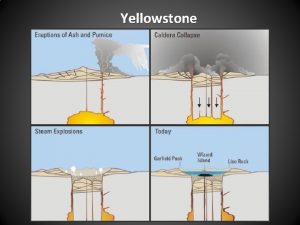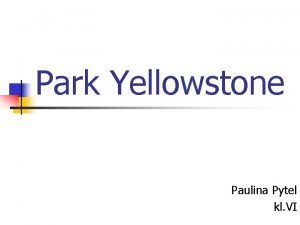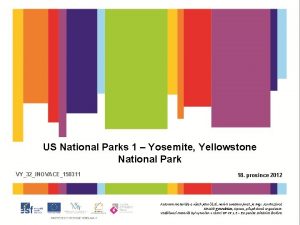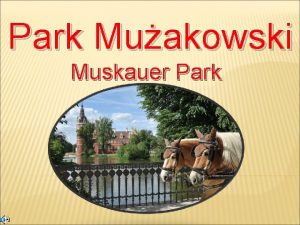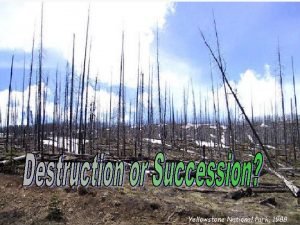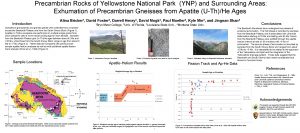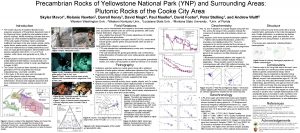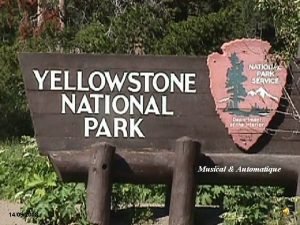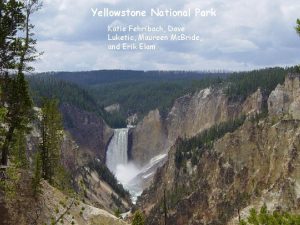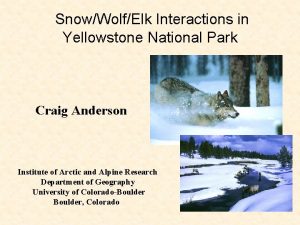CONSERVATION Yellowstone National Park the first national park



















- Slides: 19

CONSERVATION Yellowstone National Park the first national park in the world (1872) © 2017 Paul Billiet ODWS

In situ Ex situ In situ: • Conservation of species in their natural habitat • E. g. natural parks, nature reserves Ex situ: • Conserving species in isolation of their natural habitat • E. g. zoos, botanical gardens, seed banks. © 2017 Paul Billiet ODWS

In situ conservation requires management Setting up wild life reserves is not just a matter of building a fence around an area and letting it grow “wild” © P Billiet Without grazing animals heathlands, which contain a number of rare species, will revert to woodland UK Agriculture © 2017 Paul Billiet ODWS

Nature reserves and national parks • Identify and delimit the area that is suitable for the creation of a reserve • Surveys to collect data on key species • Property may have to be expropriated • Legal framework to control human activities in the area and in it’s immediate surroundings • Policing the area may also be necessary. © 2017 Paul Billiet ODWS

Biodiversity Hotspots © 2017 Paul Billiet ODWS

Les Ecrins National Park, France Park © P Billiet Buffer zone © 2017 Paul Billiet ODWS

Nature reserves and national parks • Restoring degraded areas due to bad land use • Excluding or eliminating alien species • Constant management needed to maintain the habitat of the species being conserved • This may mean arresting natural succession. Gavarnie, Pyrennees © 2017 Paul Billiet ODWS © P Billiet

Wild life corridors p To prevent islandisation of populations corridors can be created to maintain a bigger gene pool. Toad tunnel in Luxemburg © 2017 Paul Billiet ODWS

International wildlife corridors p Selous-Niassa Wildlife Corridor in Southern Tanzania p Proposes to link Selous game reserve in Tanzania with Niassa National Park in Mozambique. © 2017 Paul Billiet ODWS

The advantages of in situ conservation • The species will have all the resources that it is adapted too • The species will continue to evolve in their environment • The species have more space • Bigger breeding populations can be kept • It is cheaper to keep an organism in its natural habitat. Indrajit wordpress © 2017 Paul Billiet ODWS

However there are problems • It is difficult to control illegal exploitation (e. g. poaching) • The environment may need restoring and alien species are difficult to control. Science Museum UK © 2017 Paul Billiet ODWS

Ex situ conservation: Captive breeding • The Nene (Hawaiian goose) was practically extinct in the wild • 12 birds were taken into captivity • A population of 9000 was released back into the wild • The experiment failed because the original cause, rats, had not been eliminated • The rats eat the eggs and the nestlings of the geese. © 2017 Paul Billiet ODWS Nene (Branta sandvicensis)

Pere David’s deer success or failure? • Pere Davids deer was a native species of China • In 1865 18 were taken into zoological collections • Meanwhile it became extinct in the wild • By 1981 there were 994 individuals scattered through zoological collections. • In the 1980 s they were reintroduced to fenced parks in China. © 2017 Paul Billiet ODWS Pere David’s Deer (Elaphurus davidianus)

Ex situ conservation: the problems • Captive breeding a last resort • These species have already reached the point where their populations would not recover in the wild • It works well for species that are easily bred in captivity but more specialised animals are difficult to keep • Isolated in captivity they do not evolve with their environment. Aye aye (Daubentonia madagascariensis) © 2017 Paul Billiet ODWS

Captive breeding Zoos: The land of the living dead? • They have a very small gene pool in which to mix their genes • Inbreeding is a serious problem • Zoos and parks try to solve this by exchanging specimens or by artificial insemination where it is possible • In vitro fertilisation and fostering by a closely related species has even been tried (Indian Guar – large species of cattle - cloned) • Even if it is possible to restore a population in captivity the natural habitat may have disappeared in the wild • Species that rely on this much help are often considered to be “the living dead”. © 2017 Paul Billiet ODWS

Botanical gardens Kew Gardens London © 2017 Paul Billiet ODWS

Botanical gardens • Botanical gardens show the same problems as captive breeding of animals • Original role was economic, pharmaceutical and aesthetic • The range of species collected was limited • The distribution of botanical gardens reflects the distribution of colonial powers • Most are found in Europe and North America • But plant diversity is greatest in the tropics. © 2017 Paul Billiet ODWS

Seed banks • Seeds can be maintained for decades or even centuries if the conditions are controlled • <5% humidity and – 20°C • Not all species are suited to this treatment • Seeds need to be regularly germinated to renew stock or the seeds will eventually lose their viability • Seed banks are at risk from power failure, natural disasters and war • Duplicate stocks can be maintained • Seeds kept in seed banks do not evolve with changes in the environment. © 2017 Paul Billiet ODWS

The doomsday vault Spitzbergen BBC Bergen Nat Acc of Arts The doomsday vault was used for the first time in 2015 to restore flora in Syria. © 2017 Paul Billiet ODWS
 Food chain zebra
Food chain zebra Yellowstone national park apush
Yellowstone national park apush Yellowstone national park surveyed a random sample of 1526
Yellowstone national park surveyed a random sample of 1526 There are many types of lethal venom in the animal kingdom
There are many types of lethal venom in the animal kingdom Yellowstone food web
Yellowstone food web Beaver lake yellowstone
Beaver lake yellowstone Fall river electric west yellowstone
Fall river electric west yellowstone Yellowstone food web answer key
Yellowstone food web answer key Miś z fikcyjnego parku narodowego jellystone
Miś z fikcyjnego parku narodowego jellystone Mystery in yellowstone
Mystery in yellowstone Cerpen ditinggalkan suami ketika mengandung
Cerpen ditinggalkan suami ketika mengandung Bevágódó szakaszjelleg
Bevágódó szakaszjelleg Yellowstone vulkan
Yellowstone vulkan Yellowstone magma chamber
Yellowstone magma chamber Lava dome
Lava dome Rymdgrus
Rymdgrus Conservation of energy thermodynamics
Conservation of energy thermodynamics Brush mountain park
Brush mountain park Hình ảnh bộ gõ cơ thể búng tay
Hình ảnh bộ gõ cơ thể búng tay Slidetodoc
Slidetodoc
